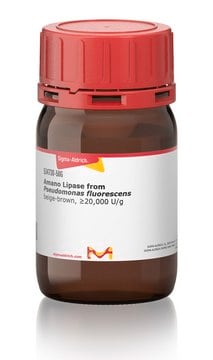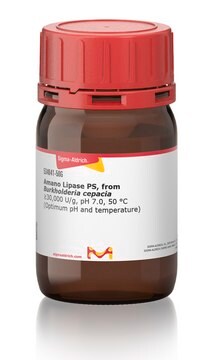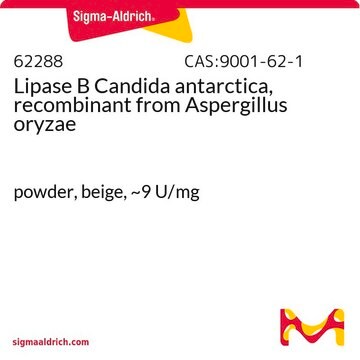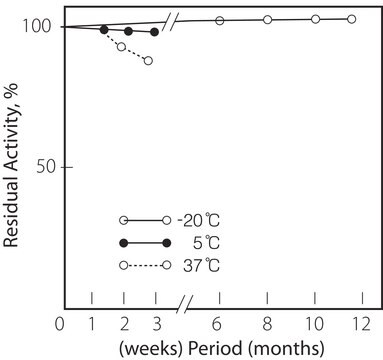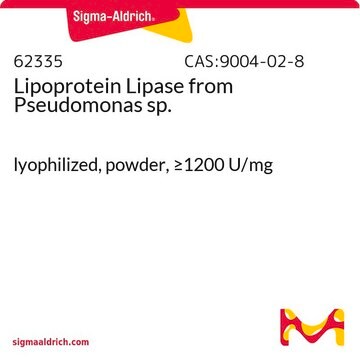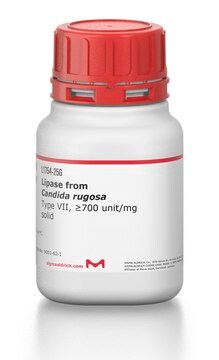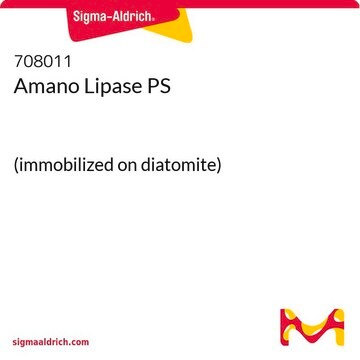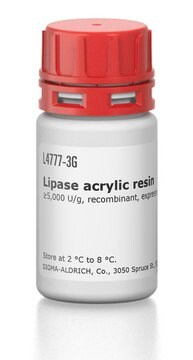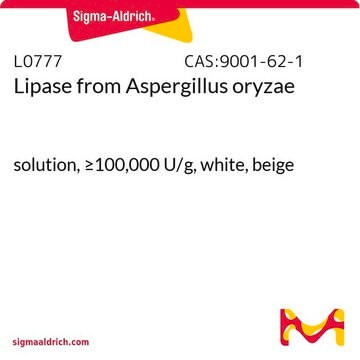62309
Lipase from Pseudomonas cepacia
powder, light beige, ≥30 U/mg
Synonym(s):
PCL, PS Lipase, Triacylglycerol acylhydrolase, Triacylglycerol lipase
About This Item
Recommended Products
biological source
bacterial (Pseudomonas cepacia)
Quality Level
form
powder
specific activity
≥30 U/mg
storage condition
(Tightly closed. Dry)
technique(s)
cell based assay: suitable
color
light beige
solubility
H2O: 2 mg/mL, hazy, faintly yellow
UniProt accession no.
storage temp.
2-8°C
InChI
1S/C11H9N3O2.Na/c15-8-4-5-9(10(16)7-8)13-14-11-3-1-2-6-12-11;/h1-7,16H,(H,12,14);/q;+1/b13-9-;
InChI key
QWZUIMCIEOCSJF-CHHCPSLASA-N
Looking for similar products? Visit Product Comparison Guide
General description
Lipase is a hydrolytic enzyme, found ubiquitously in nature. It belongs to the α/β-hydrolases fold family. Lipase structure contains amphipathic helical lid domain in the active site that helps in interfacial activation of protein.
Application
Lipase from Pseudomonas cepacian has been used to:
- catalyze the degradation of polycaprolactone scaffold
- catalyze the hydrolysis of Morita-Baylis-Hillman acetates during enzymatic kinetic resolution of racemic Morita-Baylis-Hillman adducts
- as a standard for the generation of a calibration curve to determine the activity of lipase produced by microorganisms isolated from sludge derived from an urban wastewater treatment plant for ethanol production.
Biochem/physiol Actions
Unit Definition
Other Notes
enzyme
signalword
Danger
hcodes
pcodes
Hazard Classifications
Resp. Sens. 1
Storage Class
11 - Combustible Solids
wgk_germany
WGK 1
flash_point_f
Not applicable
flash_point_c
Not applicable
ppe
Eyeshields, Gloves, type N95 (US)
Certificates of Analysis (COA)
Search for Certificates of Analysis (COA) by entering the products Lot/Batch Number. Lot and Batch Numbers can be found on a product’s label following the words ‘Lot’ or ‘Batch’.
Already Own This Product?
Find documentation for the products that you have recently purchased in the Document Library.
Customers Also Viewed
Articles
Efficient epimerization catalyst for enzyme mediated dynamic kinetic resolution (DKR).
Our team of scientists has experience in all areas of research including Life Science, Material Science, Chemical Synthesis, Chromatography, Analytical and many others.
Contact Technical Service